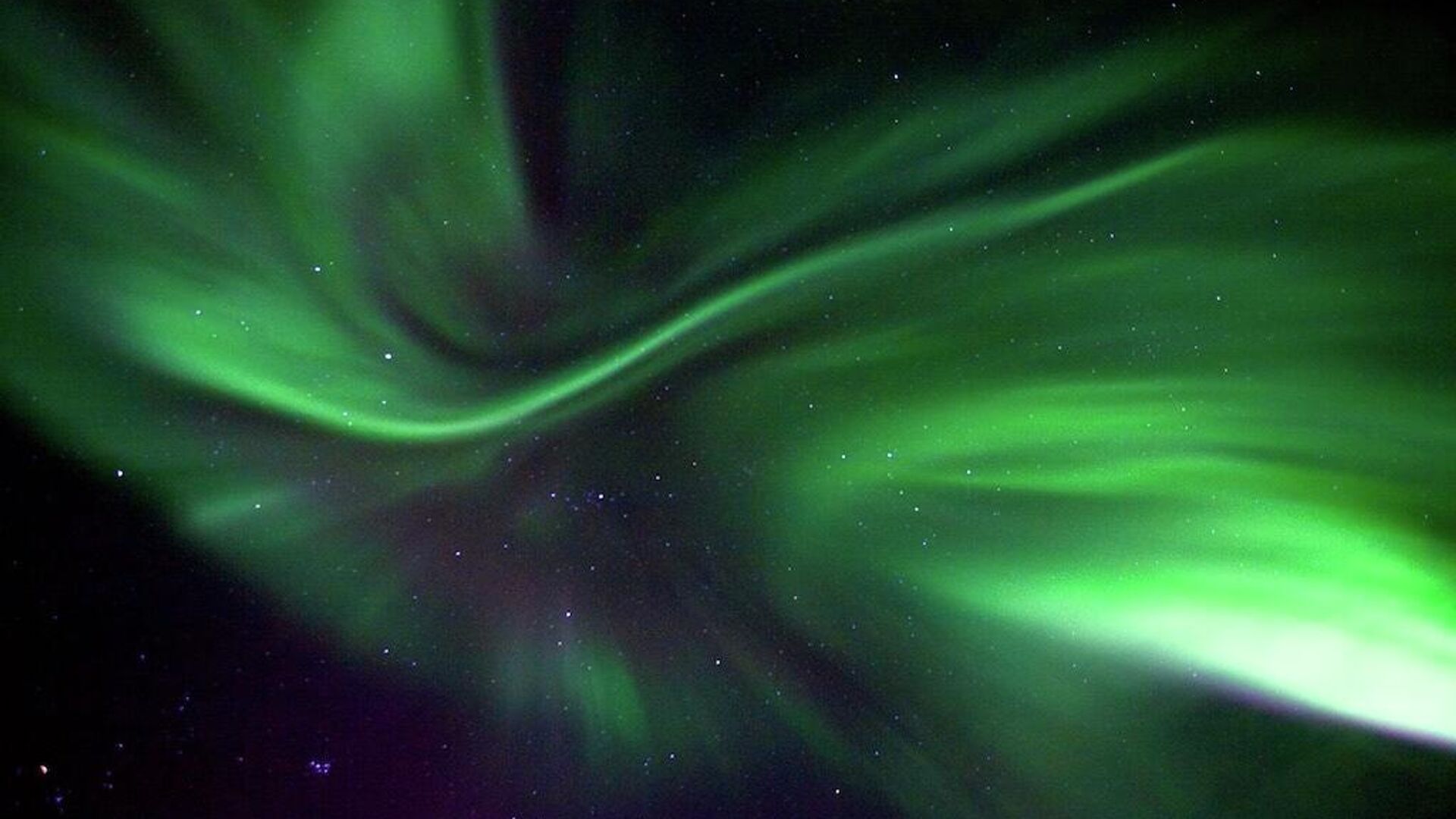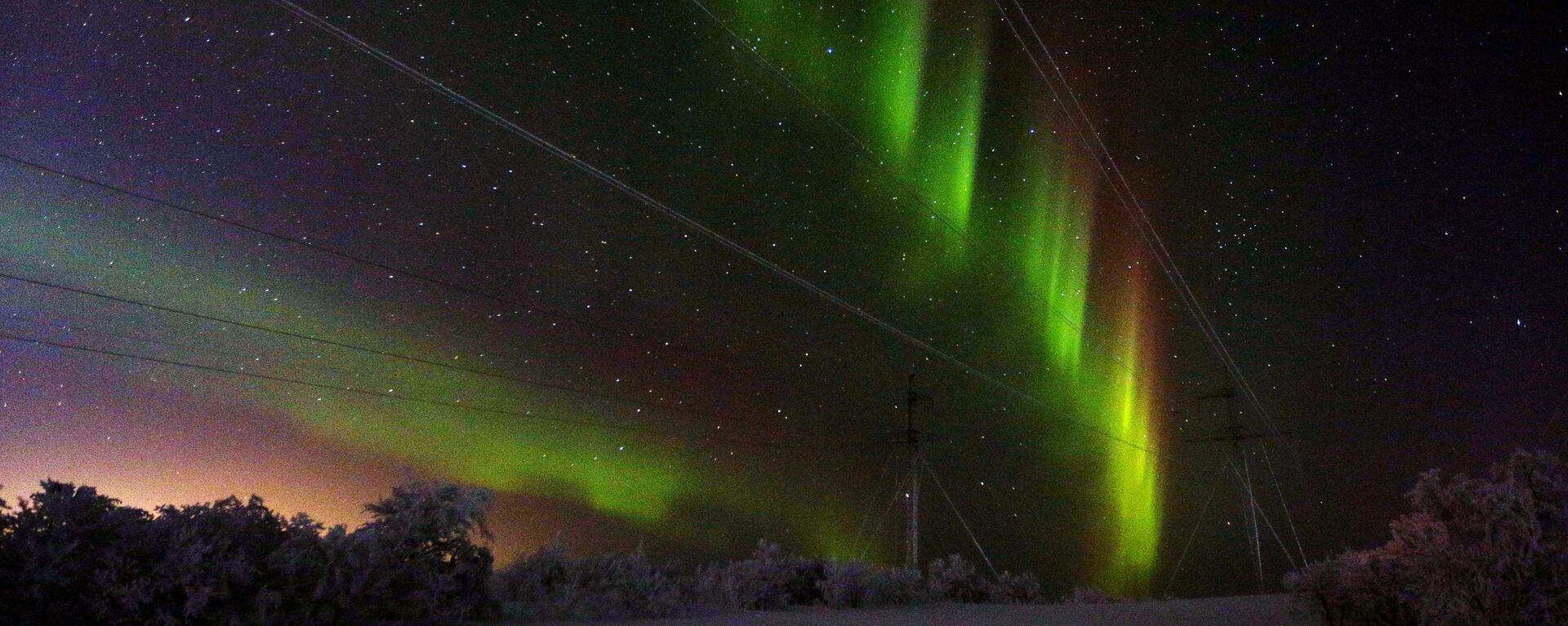https://sputnikglobe.com/20230731/finnish-skywatchers-uncover-stunning-northern-lights-breakthrough-1112273192.html
Finnish Skywatchers Uncover Stunning Northern Lights Breakthrough
Finnish Skywatchers Uncover Stunning Northern Lights Breakthrough
Sputnik International
Regular auroras happen because of electrons in the solar gust, but the occurrence spotted recently emanate from heavier particles called protons - a remarkable discovery in more than 50 years.
2023-07-31T12:50+0000
2023-07-31T12:50+0000
2023-09-27T07:20+0000
beyond politics
europe
aurora
astronomers
northern lights
finland
https://cdn1.img.sputnikglobe.com/img/07e6/05/15/1095691139_0:54:1025:630_1920x0_80_0_0_2584020276ff6edba0447189c76e967b.jpg
Finnish astronomers have found a brand-new Northern Lights spectacle called the aurora borealis.Finland's Ursa Astronomical Association stated that star watchers identified a distinctive red crescent shape in the sky accompanying the luminous Northern Lights.At first, admirers assumed it was the usual-renowned phenomenon - the stable auroral red (SAR) arc - they’ve known for over 50 years.However, further aurora research indicated that this red-colored curve and the greenish-white patterns illustrated by stargazers were generated by a solar wind, that is, a stream of solar particles.As per Ursa’s press release, unlike traditional electron-induced auroras present in solar winds, this new discovery is a proton-induced aurora that's denser.The new phenomenon has been named "Red Arc with Green Diffuse Aurora (RAGDA)" based on its appearance.
https://sputnikglobe.com/20210608/mystery-of-shimmering-aurora-curtains-of-light-finally-solved-1083100749.html
aurora
finland
Sputnik International
feedback@sputniknews.com
+74956456601
MIA „Rossiya Segodnya“
2023
Chimauchem Nwosu
https://cdn1.img.sputnikglobe.com/img/07e7/09/01/1113046371_0:99:1536:1635_100x100_80_0_0_9c5c627283eca931c39fe4852bbb301c.jpg
Chimauchem Nwosu
https://cdn1.img.sputnikglobe.com/img/07e7/09/01/1113046371_0:99:1536:1635_100x100_80_0_0_9c5c627283eca931c39fe4852bbb301c.jpg
News
en_EN
Sputnik International
feedback@sputniknews.com
+74956456601
MIA „Rossiya Segodnya“
Sputnik International
feedback@sputniknews.com
+74956456601
MIA „Rossiya Segodnya“
Chimauchem Nwosu
https://cdn1.img.sputnikglobe.com/img/07e7/09/01/1113046371_0:99:1536:1635_100x100_80_0_0_9c5c627283eca931c39fe4852bbb301c.jpg
aurora borealis, northern lights, ursa astronomical association, tähtitieteellinen yhdistys ursa, stella arcti prize, finnish astronomers, heidi rikala, eero karvinen, emma bruus, lauri kangas, red crescent shape, luminous northern lights, stable auroral red (sar) arc, aurora research, solar wind, solar particles torrent, proton-induced aurora, red arc with green diffuse aurora (ragda), electron-induced aurora
aurora borealis, northern lights, ursa astronomical association, tähtitieteellinen yhdistys ursa, stella arcti prize, finnish astronomers, heidi rikala, eero karvinen, emma bruus, lauri kangas, red crescent shape, luminous northern lights, stable auroral red (sar) arc, aurora research, solar wind, solar particles torrent, proton-induced aurora, red arc with green diffuse aurora (ragda), electron-induced aurora
Finnish Skywatchers Uncover Stunning Northern Lights Breakthrough
12:50 GMT 31.07.2023 (Updated: 07:20 GMT 27.09.2023) Regular auroras occur because of electrons in the solar gust, but the occurrence spotted recently emanates from heavier particles called protons - a remarkable discovery in more than 50 years.
Finnish astronomers have found a brand-new Northern Lights spectacle called the aurora borealis.
Finland's Ursa Astronomical Association stated that star watchers identified a distinctive red crescent shape in the sky accompanying the luminous Northern Lights.
At first, admirers assumed it was the usual-renowned phenomenon - the stable auroral red (SAR) arc - they’ve known for over 50 years.
However, further aurora research indicated that this red-colored curve and the greenish-white patterns illustrated by stargazers were generated by a solar wind, that is, a stream of solar particles.
As per Ursa’s press release, unlike traditional electron-induced auroras present in solar winds, this new discovery is a proton-induced aurora that's denser.
The new phenomenon has been named "Red Arc with Green Diffuse Aurora (RAGDA)" based on its appearance.




